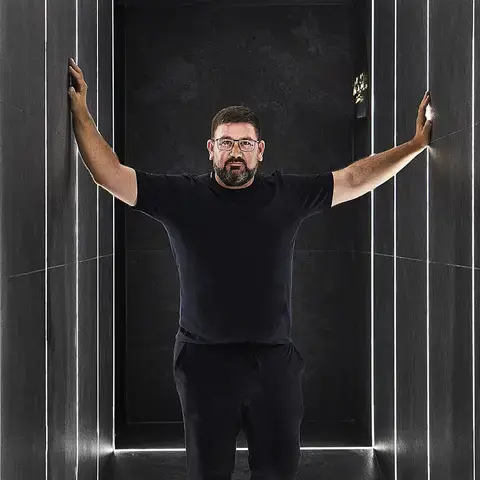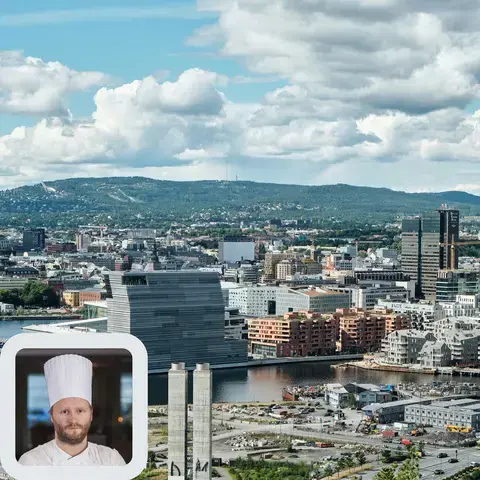There’s a hidden, humid yet well aired space above the kitchens of Fallow in London’s St James’s, Mayfair. It is kept strictly at 18°C with a constantly controlled humidity. Only a precious few people have seen inside. Head Chef Will Murray drops a metal loft ladder down in a tight space behind the dessert section and beckons me up to his “mushroom tree house”. There’s row upon row of grow bags full of a white substrate. Those of us who concentrated in biology lessons will know this is mycelium which is growing in used coffee grounds (no waste is key to Fallow’s conscious eating ethos). “These mushrooms are a week away from fruiting,” explains Murray, though we spot a couple of bags where a puffy white mushroom, the size of a cotton wool puff, with little craters, an on-trend lion’s mane mushroom, has already bolted the bag. He also grows hen-of-the-wood, golden enoki and shitake mushrooms.
Impressive though it is, this is a small, relatively low-tech set-up that supplies all the lion’s mane shavings on the roughly 200 servings ordered every day of Fallow’s signature mushroom parfait. The bestselling starter is made using the classic technique of a chicken liver parfait yet with mushroom seconds sourced from Fallow’s suppliers and mushrooms grown in-house. “It is, after all, the only thing we can grow in the centre of Mayfair,” jokes Murray wryly. The mushrooms are caramelised in butter until super dark and crisp, combined with shitake (mostly grown on-site), sauteed with mirin and soy then cooked in a water bath and left to set overnight in the fridge before being piped onto wooden boards for service. It is served with pickled shallots, herb oil-smeared sourdough and the raw lion’s mane simply pulled apart in strands which have a mineral-like, tingling taste and look rather like white truffle shavings. The intensely savoury parfait has such a velvety texture that Pierre Koffmann was initially convinced it was foie gras, apparently.

















